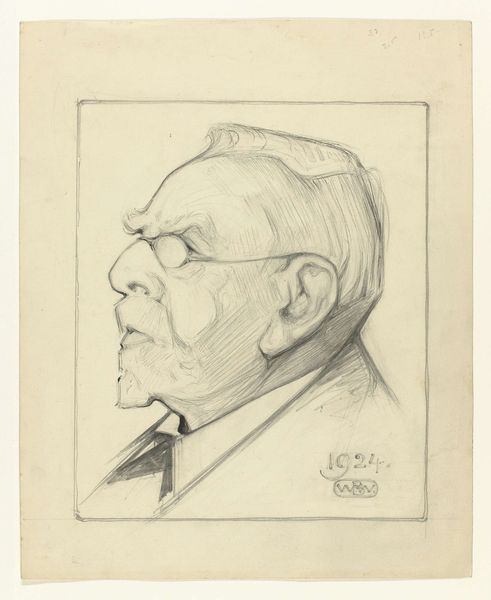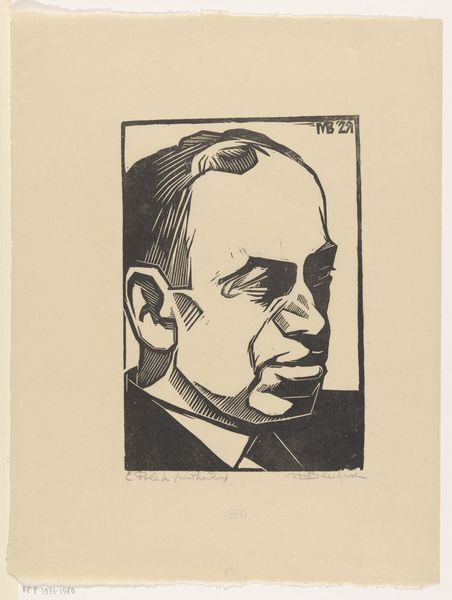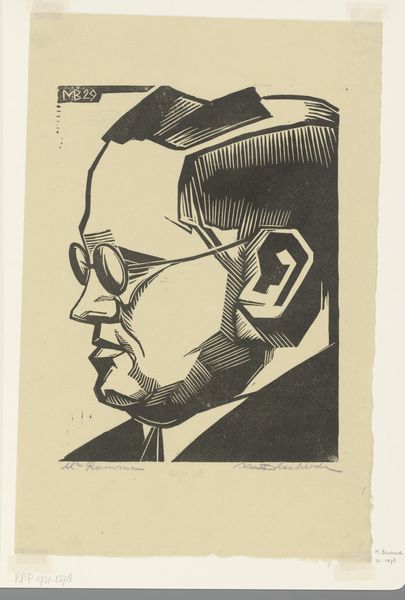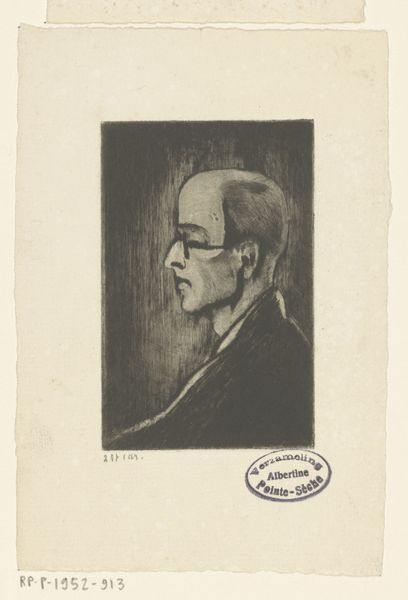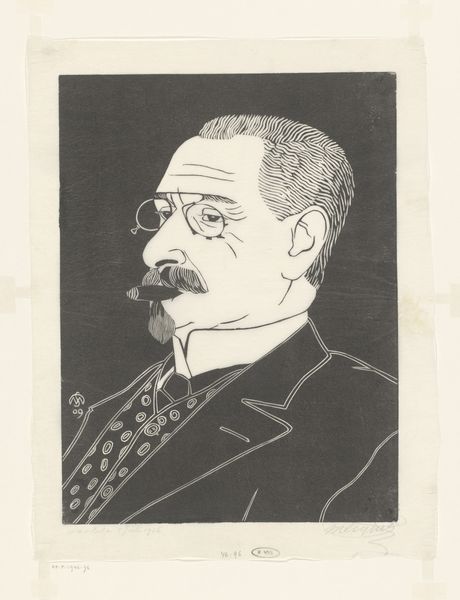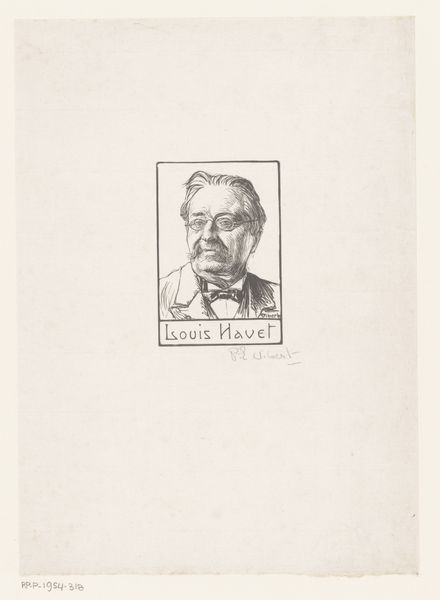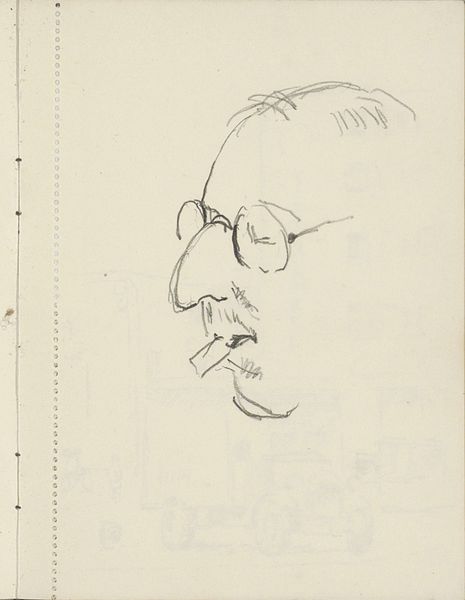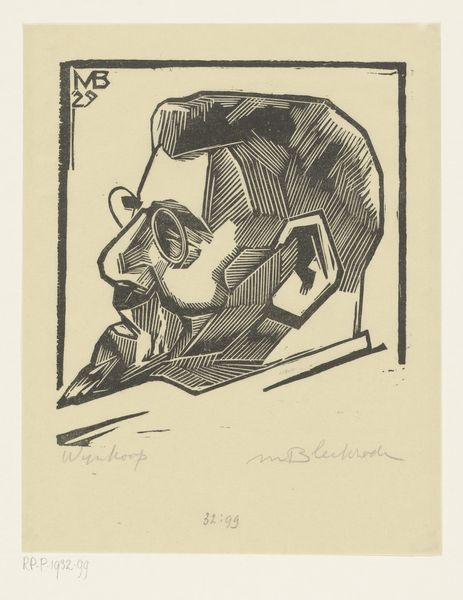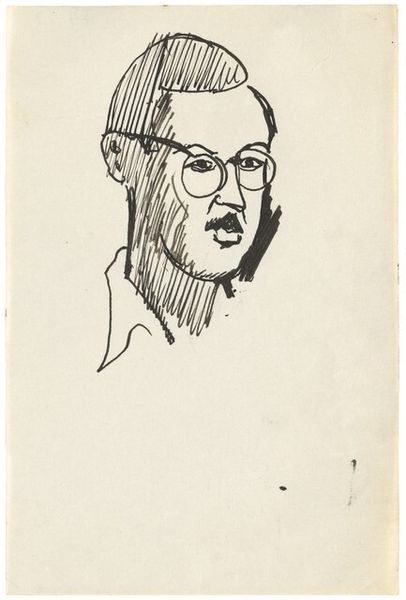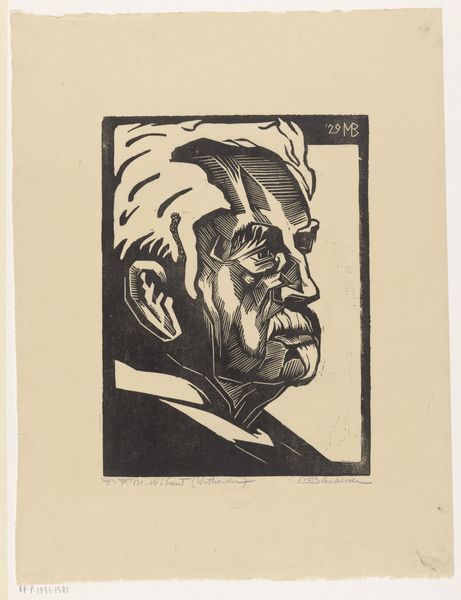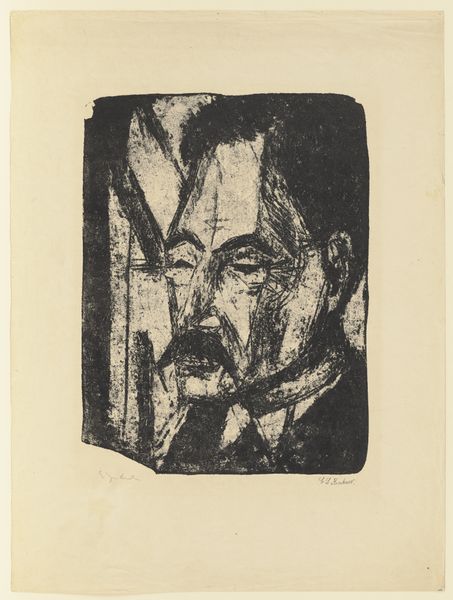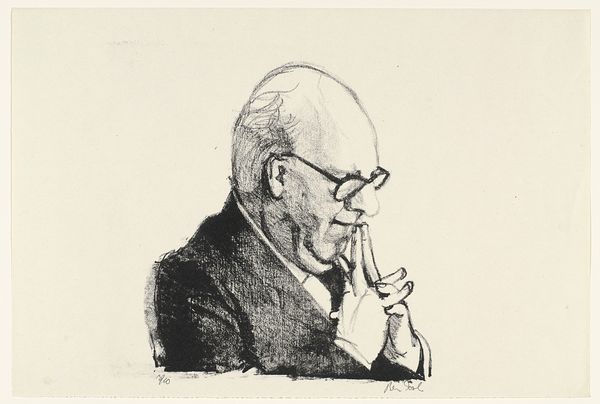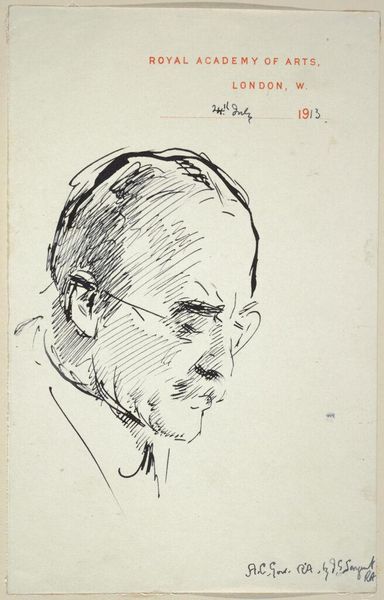
drawing, print, woodcut
#
portrait
#
drawing
# print
#
caricature
#
expressionism
#
woodcut
#
portrait drawing
Dimensions: height 289 mm, width 206 mm
Copyright: Rijks Museum: Open Domain
This is Meijer Bleekrode's "Portret van Jan van den Tempel," a woodcut print from 1929, housed in the Rijksmuseum. The stark contrast between black ink and the off-white paper creates a visually compelling image. The portrait is defined by bold, angular lines that dissect the planes of the face, lending the subject a sense of monumentality and seriousness. The formal approach simplifies features into geometric shapes and blocks of shadow, challenging conventional portraiture. Consider how Bleekrode employs the woodcut technique itself. The sharp, carved lines and textured surfaces are integral to the portrait's expressive power. There is a tension between representation and abstraction, which destabilizes the traditional function of portraiture as a mere likeness. The print prompts us to consider the semiotic interplay between image, sign, and interpretation. The visual structure isn't just a formal exercise; it engages with broader ideas about identity, representation, and the artist's role in constructing meaning. The print remains an open field for interpretation and debate.
Comments
No comments
Be the first to comment and join the conversation on the ultimate creative platform.
